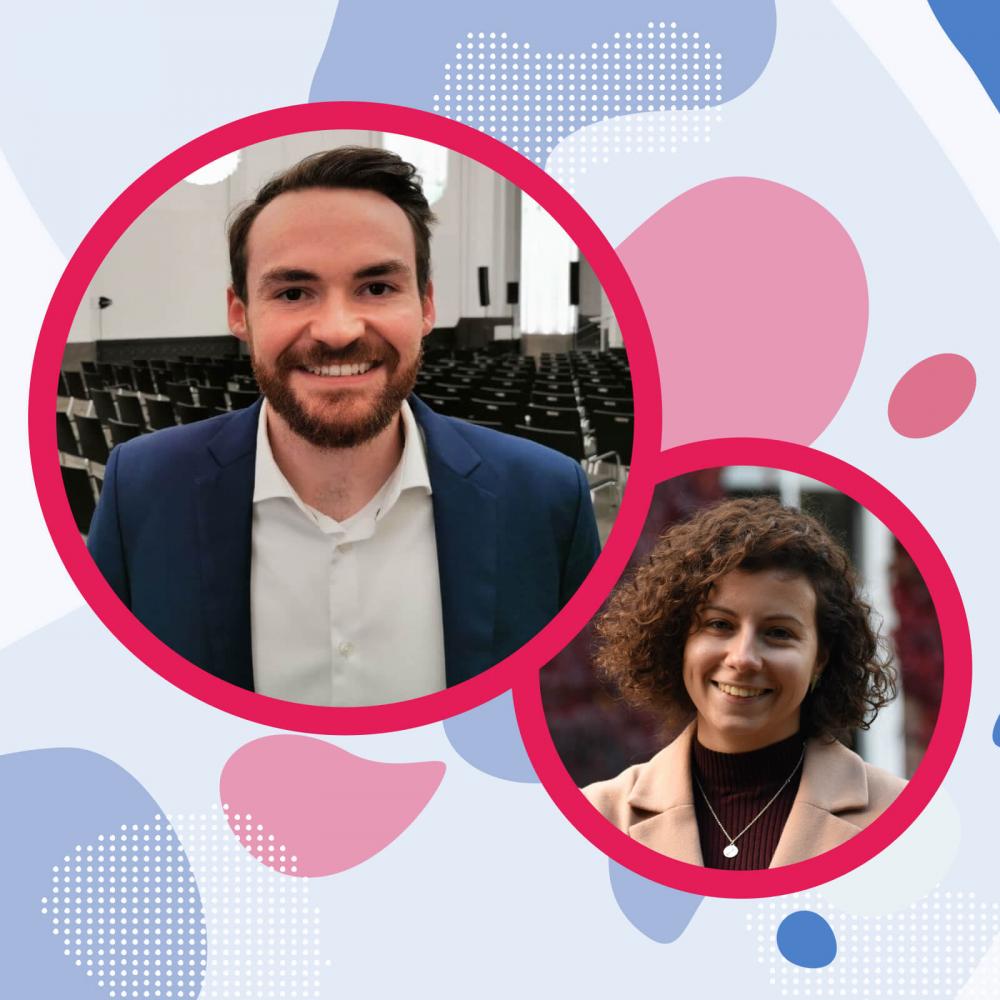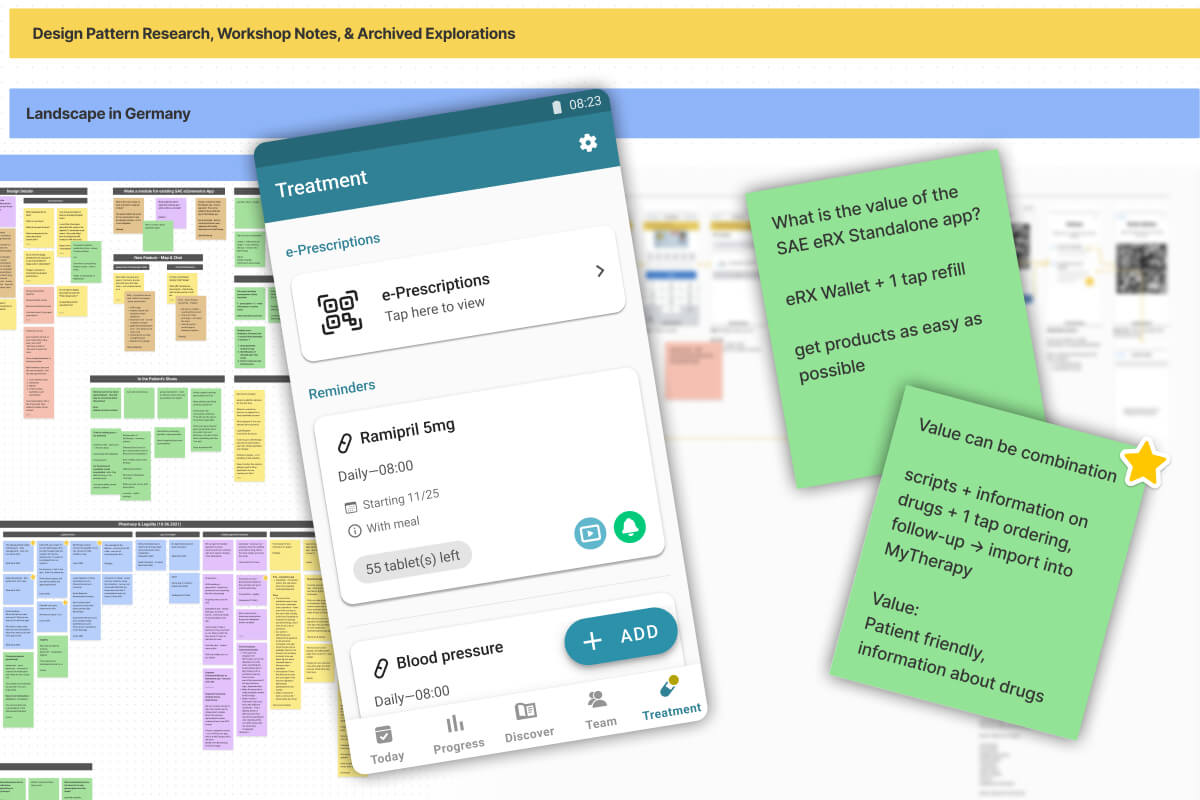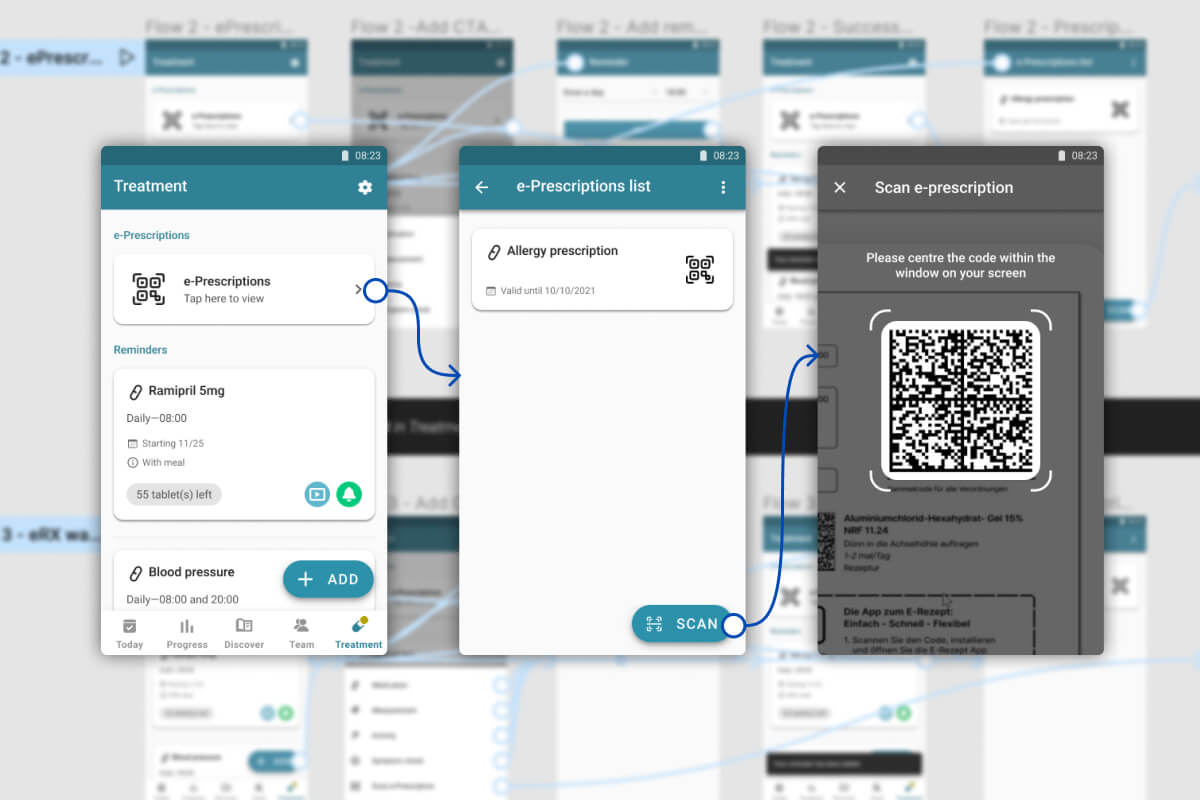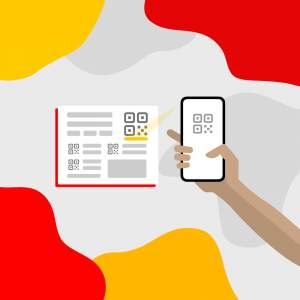E-Prescription Interview: How Supporting eRx in MyTherapy Adds Value to Users in Germany
The rollout of electronic prescriptions in Germany is gaining momentum and is expected to become mandatory nationwide in 2023. MyTherapy’s new eRx feature offers a seamless experience for users. In this interview, read why we committed to supporting e-prescriptions in MyTherapy and how it adds value to our users and pharma partners

Electronic prescriptions (e-prescriptions or eRx) are being rolled out in Germany and are expected to become mandatory in 2023, making it the default prescription method for the 70 million people with public health insurance. We recently launched an eRx feature in MyTherapy, allowing users to store their e-prescriptions and fill them online or at a local pharmacy.
In the first of a two-part interview with Product Owner, Dominik Rupprecht, and UX Designer, Andreea Dumitrascu, we discuss the reasons behind supporting e-prescriptions in MyTherapy, how the feature was brought to life, and why it benefits users and our partners in pharma.
Dominik, can you explain what is the current situation regarding electronic prescriptions in Germany?
Dominik: It was originally planned that e-prescriptions would become mandatory in Germany from January this year. That was perhaps a little optimistic, everyone realized that a health IT project of this size takes time. There are around 500 million prescriptions prescribed each year in Germany and when it comes to health topics, the technology needs to be really robust before it can be rolled out. If something goes wrong, it can have serious consequences for people’s lives.
So, instead of a ‘big bang’ rollout in January, it is being done more slowly, starting with two states/regions, then probably another eight, before a nationwide rollout in early to mid-2023. This gives more time for learning and fixing any bugs that come along.

How does the eRx feature in MyTherapy work?
D: E-prescriptions are basically digital versions of the pink paper-based prescriptions we have here in Germany. A single e-prescription can contain up to three medications. On the e-prescription, there are individual codes (called data matrix codes) for each medication and one master code that has the information for all of them.
What MyTherapy users can do is scan the codes and import them into the app. These are saved in the app’s ‘eRx wallet’ where users can store and manage their e-prescriptions. Users can use the app to find a local pharmacy and fill their medications as normal. This is useful if users don’t know the area or it's the middle of the night and they need to find a pharmacy in an emergency.
The big benefit, though, is that users can also simply order their medications online through Shop Apotheke. This can be faster, easier, and helps avoid problems like the local pharmacy being out of stock.
What were the main reasons for developing this new feature?
D: MyTherapy is all about making medication management as safe and convenient as possible. One side of that is supporting users with their treatment with features like medication reminders, the other side is making sure people always have the medications they need. Obviously, before taking your medication you need to get it and we wanted to make this step as easy as possible. Because we are now a part of Shop Apotheke, we can offer a more complete package. Other online pharmacies can sell you your medications but don’t really offer the disease management support that you get with MyTherapy.
Andreea: Just to add to that, MyTherapy helps millions of people adhere to their treatment and prescriptions are an integral part of that. Lots of people want to keep track of their prescriptions to have a better overview of their treatment, but paper prescriptions can be damaged or misplaced, so being able to scan and save e-prescriptions is very useful.
What about the official e-prescription app?
D: Yeah, so Gematik is the national agency for digital medicine in Germany and they have launched an app to go with e-prescriptions. The barriers to using it are quite high, though, because to have all the functionality of the app, patients need to have the latest health insurance card and also need to get a PIN from their health insurance company. So, there’s a bit of extra preparation needed to use it. Especially for people already using MyTherapy, it is perhaps easier to use our feature instead of downloading a new app and going through those processes.
Also, new apps tend to take time to offer an advanced user experience and need iterative improvements. MyTherapy has already gone through hundreds of releases, so we have a lot of experience in all aspects of app development. At the moment, the Gematik app has a much lower rating than MyTherapy.
A: It also relates to what we mentioned about offering an all-around service.
Whereas the Gematik app is focused solely on the prescription side of things, we are offering a more seamless integration with other medication management features.
Aside from users, why is adding eRx important for our partners?
D: The programs we build for our pharma partners are built on MyTherapy, so they get all of the features that we develop for the app. We are already having workshops with pharma companies, and they are seeing that e-prescriptions are going to become an important thing in Germany.
Prescription medications are obviously very important to pharma, so this ability to help patients refill can be a key component of the patient support programs pharma companies offer. Improving refill rates also helps with adherence because patients don’t suddenly find themselves running out of their medications. This is obviously a positive thing for patient outcomes, and it is also good for pharma from a business perspective, so we are seeing interest increase.

What were some of the biggest challenges while developing the feature?
D: There was a lot to consider. It’s not just a new feature, it’s a whole new approach to prescriptions in Germany, so there is basically no real-world information about how it will work or what user expectations are. So, it took a lot of time for us to understand what we wanted to achieve.
A: To add to that, e-prescriptions can have a lot of codes. There are up to three prescriptions, each of which has a code, there is a master code, and there is also a QR code for users to download the Gematik app. That makes it very difficult to predict what users will do and what they will scan, so we had to make sure the app could deal with people behaving in lots of different ways and still make it as easy as possible to use.
D: From a technical perspective, a challenge also came from our unique integration with Shop Apotheke. We have to work very closely with the team there to make sure the apps communicate properly, which is something new for us.
This whole feature is really quite complex, and, in the beginning, there was a lot of uncertainty. We had to break it down into more manageable pieces that can then be tackled.
As a new Scrum team at smartpatient, it was a bit of a journey for us, and we definitely learned that the development process is a team sport.
It’s not a case of one person doing what they want, because there are a lot of different angles from team members.
Finally, do you already have some ideas for how the eRx feature will develop in the future?
D: One idea is to have more ways of importing e-prescriptions. At the moment, users need a paper print-out of the e-prescription to be able to scan it, so we want to find a way of avoiding that by being able to import PDFs or images. But we need to wait and see how doctors will prescribe medications using eRx and how our users will adopt this.
We also want to improve the eRx wallet by adding information like how long the e-prescription is valid.
Another development that is planned for e-prescriptions is allowing doctors to make prescriptions that become valid at a later date. For example, if a patient usually picks up their medications every three months, doctors can give an e-prescription for the year that will become active in 3-month increments. We want to support that and be able to remind users when an e-prescription is about to become active.
Finally, we want to create more integrations with other features in the app, such as being able to automatically create medication reminders based on e-prescription data.
We have a lot of ideas. But we also want to wait to see how users engage with the eRx feature to gather user feedback, so any improvements we make adds value to as many people as possible.
Keep an eye out for part two of the interview, in which Andreea and Dominik discuss the process of ensuring that MyTherapy’s eRx feature delivers the best possible user experience.
Are you interested in building your digital patient support program on MyTherapy and driving the adoption of e-prescriptions in Germany? Then don’t hesitate to book a meeting.




